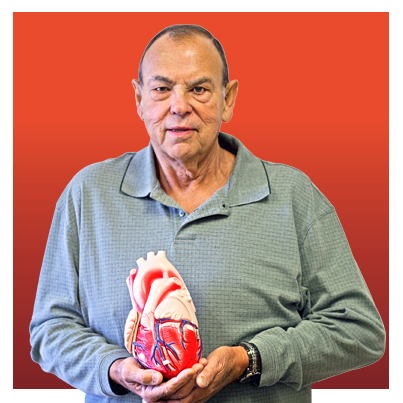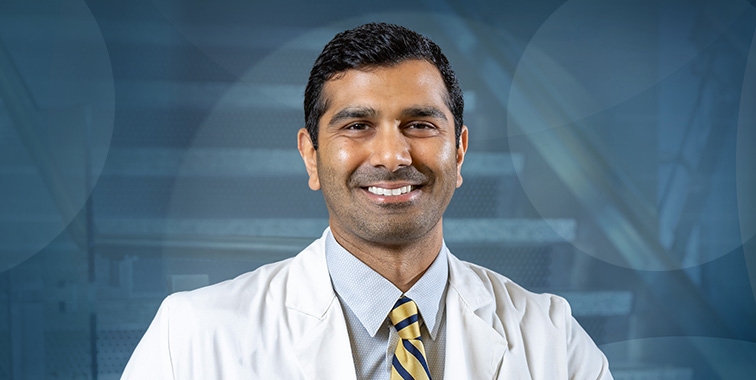Mending Hearts
- Category: Community Newsletter
- Posted On:
- Written By: Laura Hanzo
To download a PDF version of this article as it appears in our newsletter CommUnity, please click here.
 Sometimes children are born with a “hole in the heart,” causing
fear in parents from their child’s first breath. But, sometimes
the condition goes undetected for years before causing problems later in life.
Sometimes children are born with a “hole in the heart,” causing
fear in parents from their child’s first breath. But, sometimes
the condition goes undetected for years before causing problems later in life.
Robert Meehan Sr., pictured, is one of those patients. Although he is no stranger to heart problems, he recently discovered he suffers from atrial septal defect (ASD), commonly known as a hole in the heart.
Before moving to Hammond 14 years ago, he had several cardiac stents inserted and bypass surgery. But the circumstances leading to his most recent cardiac procedure came as a complete surprise to him.
“I wasn’t feeling anything unusual,” he explains. “Before I had the stents placed and even with my bypass surgery, I was not feeling well. But before this one, I really felt fine.”
During a routine visit with Cardiologist Jherie Ducombs, Meehan discovered he had an ASD, which had been present since his birth.
“Mr. Meehan had an echocardiogram done to re-evaluate his heart function and was found to have the ASD,” states Dr. Ducombs. “We weren’t really looking for it, since some of the feelings he was experiencing, such as mild chest discomfort and shortness of breath with activity, could have been explained by his other heart problems. The ASD was incidentally found, like most.”
Dr. Ducombs referred Meehan to colleague Dr. Nik Abraham, who specializes in a procedure that is less traumatic than conventional open heart surgery to repair the ASD and is performed in the North Oaks Cardiac Catheterization Lab.
“This procedure involves using a catheter to insert a plug into the ASD’s opening,” Dr. Abraham explains. “Usually, just an overnight stay in the hospital is all that is required and patients have minimal recovery time.”
If the ASD is unusually positioned or if additional heart defects need treatment, then open-heart surgery may be considered.
If the hole is large enough, symptoms such as difficulty breathing and heart palpitations may begin at birth. But it is common for ASD to go undetected into adulthood.
Such was the case with Meehan.
“I had no idea the hole was there,” he affirms, “and I am so glad it is now repaired. I told Dr. Abraham, if there’s a way to fix it, then let’s do it.”
What is ASD?
ASD develops as a birth defect that causes a hole between the two upper chambers of the heart, allowing oxygen-rich blood to leak into the oxygen poor chambers of the heart. Over time, this causes the right side of the heart to work harder and may lead to complications.
What are the symptoms?
The severity of the symptoms depends on the size and location of the hole. When symptoms do occur, they may include:
- Difficulty breathing (dyspnea)
- Frequent respiratory infections in children
- Feeling the heart beat (palpitations) in adults
- Shortness of breath with activity.
How is ASD treated?
If the opening is small, correction may not be necessary. Larger holes, however, can lead to heart failure and death if not repaired.
If you are experiencing symptoms of ASD or have any concerns about your heart, talk with your physician. If you need a cardiologist, call North Oaks Cardiology Clinic at (985) 230-7350 in Hammond or (225) 686-4960 in Livingston.




[1].jpg)